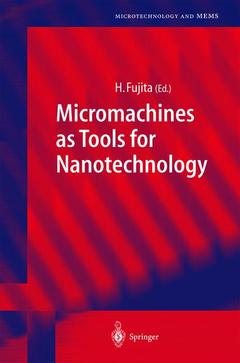Description
Micromachines as Tools for Nanotechnology, 2003
Microtechnology and MEMS Series
Coordinator: Fujita Hiroyuki
Language: English
Subject for Micromachines as Tools for Nanotechnology:
Publication date: 10-2012
211 p. · 15.5x23.5 cm · Paperback
Publication date: 07-2003
211 p. · 15.5x23.5 cm · Hardback
Description
/li>Contents
/li>Comment
/li>
Addresses the use of MEMS (micro-electro-mechanical systems) and micromachined devices for the investigation of nanoscience and technology, as well as biotechnology. Such micromachined tools for nanotechnology can enhance the sensitivity, spatial resolution, dexterity, selectivity, and parallel processing capability in measuring and manipulating nano-objects. The book covers state-of-the-art MEMS and NEMS devices for DNA molecular handling and analysis, cell handling and culture on a chip, chemical lab-on-a-chip, multi-probes for vacuum tunneling microscopy and AFM, and characterization of quantum semiconductor structures. Readers will gain deep insight into such developments and students will learn about the emerging field of MEMS and nanotechnology
These books may interest you

MEMSApplications 71.13 €



